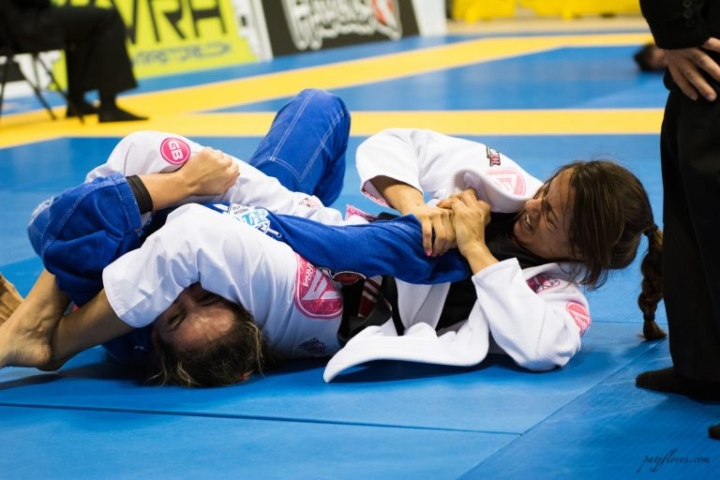In training, you’re supposed to take care of the people you roll with. Whenever you apply a submission (or perform any technique for that matter), you should take into consideration that this move could hurt the training partner; so, you should never push the technique past the limb-breaking point.
But what about BJJ competitions? Should you go for the break – even at local tournaments?
GOING FOR THE „BREAK“ AT A BJJ COMPETITION
I often do not understand what the point of „no tapping“. Jiu-Jitsu is like a game of chess; if you put someone in checkmate, there’s no sense for them to keep moving the figures. But that’s exactly what happens when you have, let’s say, a tight Armbar – and your opponent doesn’t want to tap, despite the popping sounds.
At that point, I’d be willing to go for the „break“. Even though I’m careful with my competitors and never rip out the submission, I’d continue applying it until the person submitted or until the match was stopped due to injury.
Because, in the end of ends, that’s what you’re applying yourself for if you decide not to tap in competition.
The Scenario of a Tight Armbar
Imagine being in a tournament, having successfully applied a tight armbar. Your opponent, for whatever reason, chooses not to tap despite the imminent risk of injury. This situation presents a moral crossroads:
- Continuing the Submission: One school of thought argues for continuing to apply the submission steadily. This approach respects the opponent’s decision not to tap while still aiming to win the match. The responsibility for any resulting injury lies with the competitor who chose not to submit, assuming the technique is applied correctly and not excessively fast or harsh.
- Releasing the Hold: Another perspective prioritizes the safety of all competitors. If there’s a clear risk of severe injury, some may argue for releasing the hold to prevent harm. This approach puts the safety and well-being of competitors above the competitive aspect of the sport.
The Role of Referees
In BJJ competitions, referees play a crucial role in ensuring safety. They are trained to recognize when a competitor is in imminent danger of serious injury and can intervene to stop the match. Their judgment can take some burden off the competitor applying the submission, but it doesn’t entirely eliminate the ethical dilemma.
Competition as a Test of Skill, Not Endurance of Pain
Competitions are meant to test skill, technique, and strategy, not one’s ability to endure pain or risk injury. The culture of “no tapping” can be seen as antithetical to the spirit of BJJ, encouraging unnecessary risk-taking.
The Importance of Sportsmanship and Respect
BJJ teaches sportsmanship and respect for opponents. These values should guide competitors’ actions, balancing the desire to win with the well-being of their opponents.
The decision to “go for the break” in a local BJJ competition is deeply personal and fraught with ethical considerations. While competitors enter the mat understanding the risks involved, there is a collective responsibility within the BJJ community to uphold the values of the sport – control, respect, and safety. The ethos of BJJ should guide practitioners not just in how they execute techniques, but also in how they make these critical decisions during competition.

















